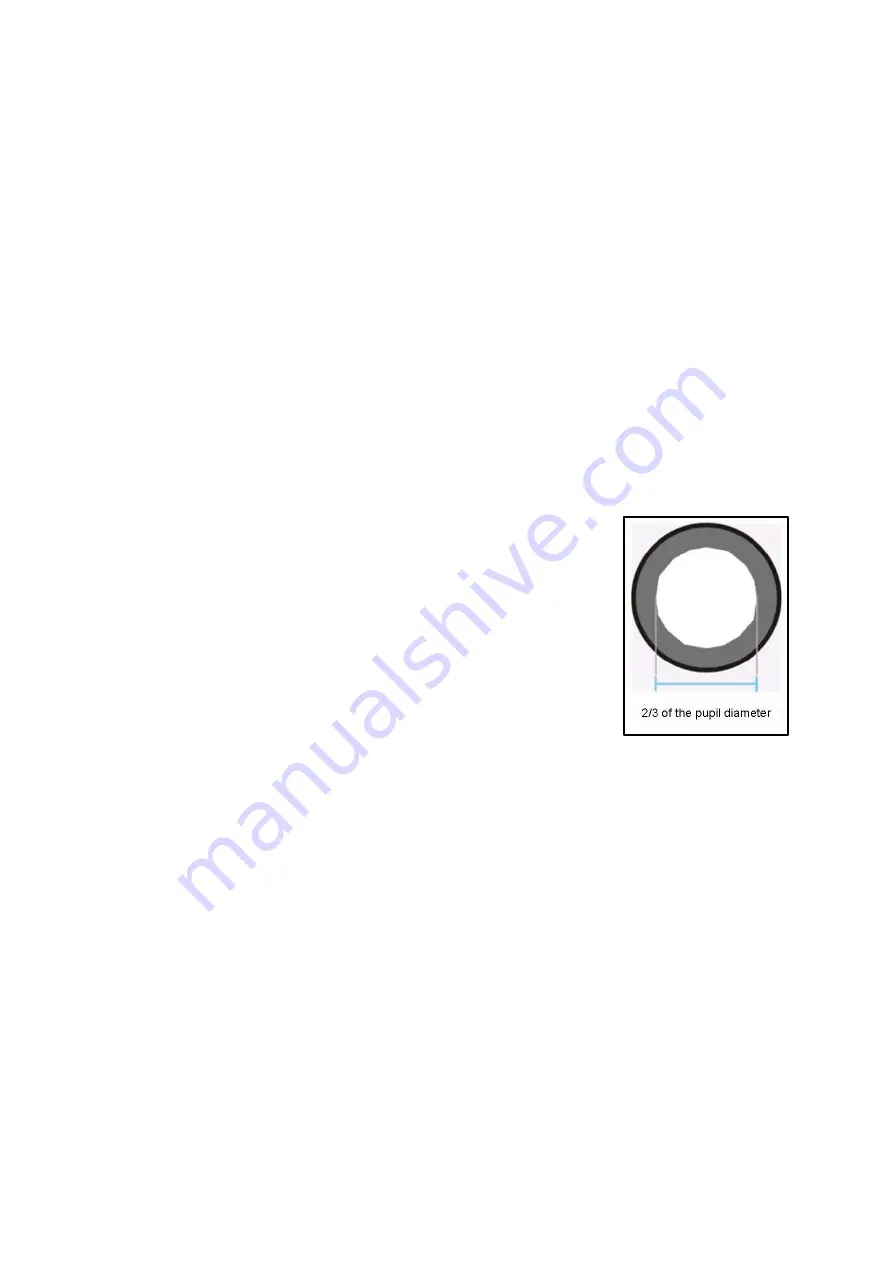
15
OBS-1-BA-e-1912
5.6 Adjusting the illumination
To make sure that perfect image results are achieved during microscopic
observation, it is important that the direction of light of the microscope is optimised.
The necessary control elements for this are the height-adjustable condenser with
aperture diaphragm.
When adjusting the lighting for the first time, you must first select the lowest possible
objective magnification, so that you can carry out the following steps.
1. Adjust the height of the condenser by turning the condenser focus dial to get a
good contrast of the microscopic image. Normally therefore you have to bring the
condenser to just below the maximum height.
2. Use the aperture diaphragm of the condenser to find the
very best compromise between contrast and resolution for
the microscopic image. For the objective with the lowest
magnification the lever of the aperture diaphragm should be
placed almost completely on the right-side limit, so that the
opening of the diaphragm is very small. The higher the
magnification of an objective, the larger the opening should
be selected by pushing the lever towards the left-side limit.
The view in the tube without the eyepiece should look something like the
illustration on the right.
The diameter of the aperture diaphragm which is then visible should make up
approximately 2/3 of the pupil diameter.
If the eyepiece should be removed, for checking, then please make sure that no
dirt or dust falls into the tube.
3. The brightness is always controlled by the bulb brightness (using the dimmer) and
not by the aperture diaphragm.
Summary of Contents for OBS 101
Page 2: ......
Page 7: ...OBS 1 BA e 1912 6 2 Nomenclature...
Page 9: ...OBS 1 BA e 1912 8...
Page 10: ...9 OBS 1 BA e 1912...








































